I have been traveling in a little RV, visiting various places in New Mexico where I haven’t been for about a decade. Today I went back to a little community near Columbus and the Mexican border where I once had spent quite a bit of time when I was making a documentary video called A Sampler of Alternative Homes. One of the Homes I profiled in that film was Ted Specker’s abode, one of the more unusual places of all.
Ted died a few years ago and his domain has been abandoned since then. I was curious how his diggings have survived. Since I had been there Ted had done quite a bit more building, so there were new forms to behold. Everything was showing some of the ravages of time, but all of it was still interesting, as you can see by this series of photos.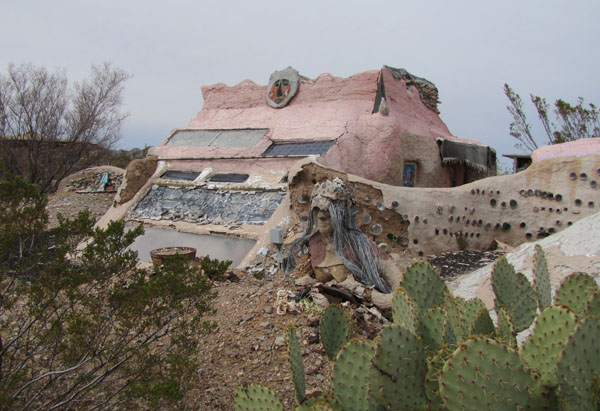
At heart Ted was an artist whose medium was earth, stone, and found objects. In this hot desert climate, several of his rooms were at least partially underground; this is how he beat the heat during the hot season.

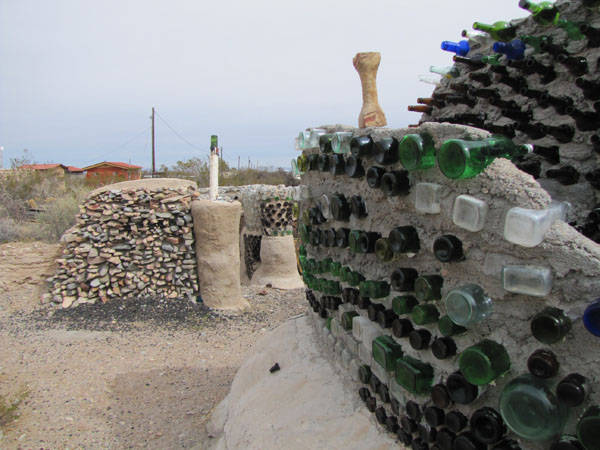
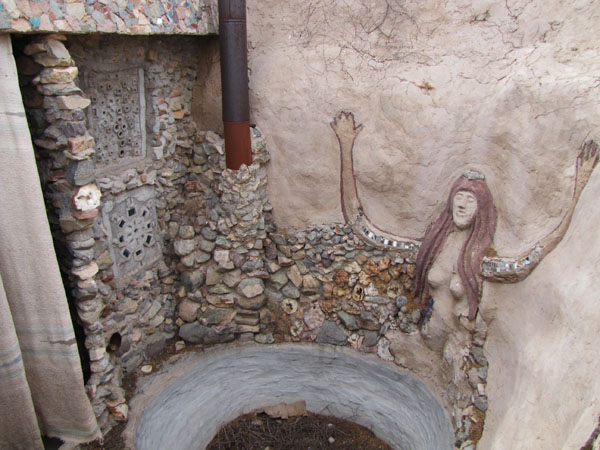
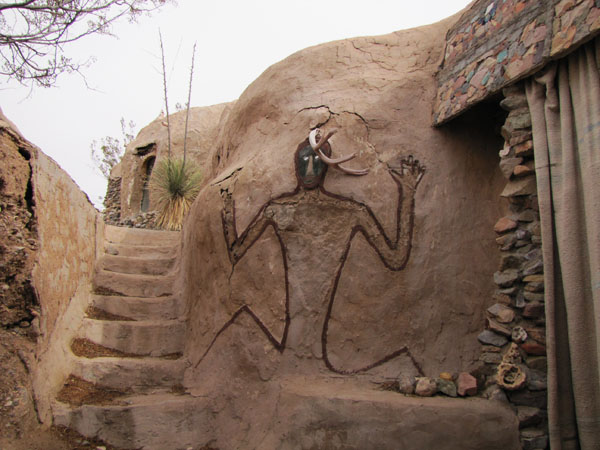
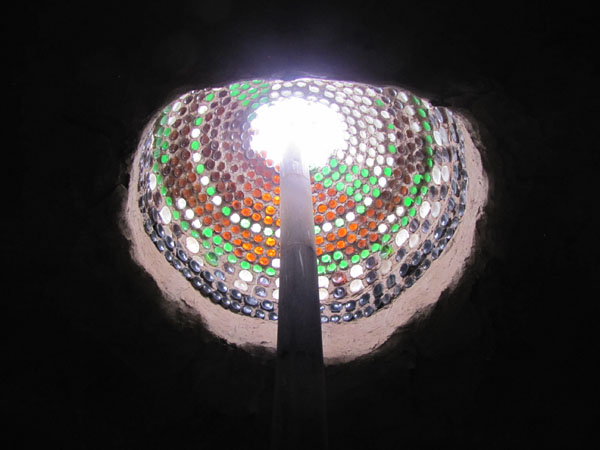
Incorporate the maintenance instructions into the decorations. If you don’t feel like making a how-to bas-relief, print out and laminate them, then use them as tile wall for the bathroom opposite the toilet.
Sadly, this is an all too common fate of many alternative structures, particularly the more “artsy” structures.
There are a variety of reasons for this. I’ll mention five.
1. These types of structures almost have to be built where there are no building codes. This has been discussed at great lengths on this blog. Structures that are not built to code are nearly impossible for potential second owners to get financing to purchase them. Therefore a second owner would need to have saved enough money to pay cash. Those types of buyers are hard to find for any type of structure.
2. Areas with few or no building codes tend to be rural or remote. There are often other abandoned structures or homesteads in the area as well. Sadly, most buyers are more interested in a more standard type of construction.
3. Those people who are interested in a more “artsy” type structures often are artists themselves and would rather create their own artistic statements.
4. There are many great artists that can create structures that are stunning in appearance. Unfortunately, it is rather rare for an artist to also have the skills of an engineer or master builder. It happens sometimes, sure, but it’s a rare combination. Sadly, this results in far too many artistic structures often having some serious flaws, like leaky roofs, leaky windows, bad plumbing, mold, etc. Certainly this is not always the case, but it happens more often than we all wish. Of course, these types of problems are very common in standard code approved structures as well, but most buyers don’t think about that. They see something unusual and get nervous. Purchasing a home is a big investment, and taking a risk on someone else’s artistic dream in hopes that it is structurally sound and water tight is not a risk most individuals are ready to take.
5. These types of unusual structures are almost always built in unusual ways. It’s very difficult for an average second owner to find the right people that really understand the structure and how to repair or maintain it.
For all of these reasons and more, many amazing structures fall into neglect and disrepair as soon as the original builder isn’t around to care for it any longer.
I’m not saying it’s right or fair. It’s just the way it is.
Good insights. It probably will be difficult to find a new owner. Maybe a relative or friend will take care of the place.
I hope someone maintains these structures.
Too cool for words.
Let’s Do It !